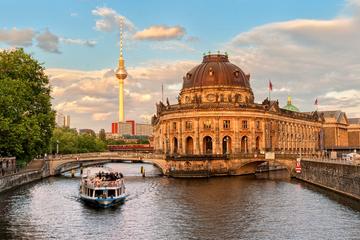
Museumsinsel (Museum Island)
Located on the northern tip of Spree Island, Berlin’s Museumsinsel (Museum Island) is an ensemble of five world-renowned museums. In 1830, King Friedrich Wilhelm III commissioned the construction of the Royal Museum - now the Altes Museum - to allow the general public to view the royal art treasures of Germany. The idea for the island was devised in 1841, when Friedrich August Stuler wanted to create a cultural center, which later became Museum Island.
Almost 70% of the buildings were destroyed during World War II, where the collections were divided between East and West Berlin. Since 1999, the museum has been the only architectural and cultural ensemble that was honored world heritage status by UNESCO.
If you can only visit one museum, The Pergamon, completed in 1930, is your best bet. This collection of museums house the Collection of Classical antiques occupying the architectural halls and sculpture wing, the Middle Eastern Museum and Museum of Islamic Art. You will also find classical sculpture and monumental architecture from Greece, Rome and Babylon.
The Bode Museum, formerly the Kaiser-Friedrich Museum added in 1904, houses an extensive collection of sculptures from the Museum of Byzantine Art as well as a coin collection.
The Altes Museum is one of the most important works of Neoclassical architecture. Its Pantheon-inspired rotunda is the focal point of the prized Antiquities Collection of Greek, Roman and Etruscan art and sculpture.
The New Museum (Neues Museum), completed in 1859, is a showcase for prehistoric and Egyptian treasures. It was reopened in 2009 after being in ruins for ten years. Its most valued piece is the bust of Nefertiti.
The Old National Gallery (Alte Nationalgalerie), completed in 1876, features works of Classicism, Romanticism, the Biedermeier era, Impressionism and early Modernism.
Renovation continues across all museums.
Practical Info
Within walking distance of the U2 Subway and the S5, S7, S75 Trains.
